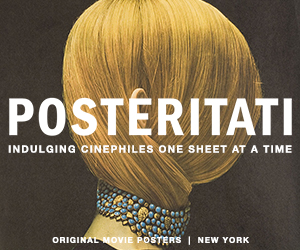To say that The Tales of Hoffmann is nightmare fuel is not to denigrate it. Everyone involved surely knew that they were making something that was, on some level, disturbing. But removed from its immediate context—mid-century England, where Jacques Offenbach’s fantasy opera was presumably a more familiar work—the grotesqueries and oddities take on a suspended sort of bizarreness.
First performed in 1881 in Paris, a few months after Offenbach’s death, the opera centers on the title poet, a hopeless romantic who regales listeners at a tavern with stories of his three great loves: a life-sized marionette whom he doesn’t at first recognize is an “automatic;” a courtesan under the spell of a demonic figure; and a singer suffering from a fatal illness. In this, the third cinematic version of the opera, the filmmaking team of Michael Powell and Emeric Pressburger unleash nearly every one of the fantastical flourishes they had been experimenting with and indulging in throughout the 1940s, with Technicolor extravaganzas such as A Matter of Life and Death, Black Narcissus, and The Red Shoes.
Yet compared to those films and despite the cinematic techniques consistently on display—dissolves, blurred lenses, superimposed imagery, and much much more—The Tales of Hoffmann still feels strangely stagebound. For all its opulence, it never creates a distinct sense of space like, say, Black Narcissus, where an ethereal version of a Himalayan convent was created on an English soundstage. Yet The Tales of Hoffman is never less than dazzling, given the elaborate, multi-dimensional sets, fanciful costumes, and opulent makeup design. I can’t speak to the singing, having little experience of opera, or to the acting in this style, except to note that Robert Helpmann (a veteran of The Red Shoes) does the most work with his multiple roles, which range from a conniving aristocrat to a wiggy puppet-maker to a demented doctor to, well, the devil. His eyebrows are always intimately attuned to the music, pulling the rest of his body along.
Of the three featured women—Moira Shearer, Ludmilla Tcherina, and Ann Ayars, all playing female characters who are cruelly controlled by a man—Shearer, star of The Red Shoes, registers the most strongly. She appears in the prologue as a dragonfly in a beautifully blue-tinged ballet number, then again as the unnerving automaton, twirling about with a poise that indeed feels inhuman. Despite the other alarming elements in the film—including a horrifying clown early on—it’s this section that will likely unsettle your dreams. As Hoffmann, Robert Rounseville dons a series of garish glasses that must have inspired Elton John’s wardrobe; there is an ensemble of dancers pretending to be marionettes, sporting cellophane hair and dead eyes; and Shearer’s doll comes to a violently dismembered end. The Archers, as Powell and Pressburger dubbed themselves, always dealt in artifice, but rarely was it as uncanny as this.
7/24/2024



